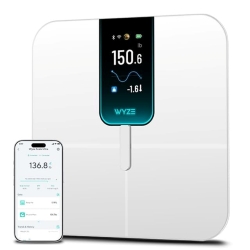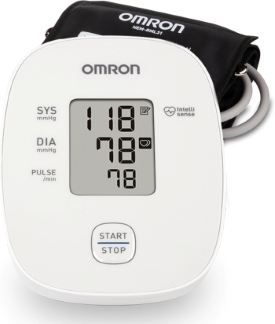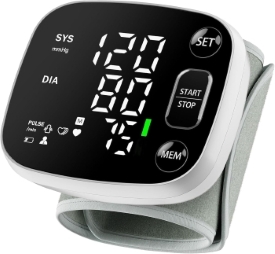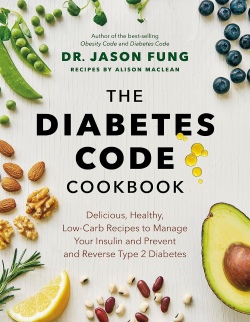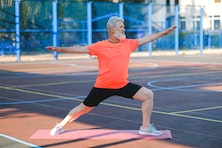How to Prevent Stroke
Medically reviewed by Karen Murray, OT, CHT, CSRS - written by Stroke-rehab.com
If you're wondering how to prevent stroke, there are effective strategies that can be taken to mitigate your risk. No one can guarantee that you won't experience a stroke, but by adhering to recommendations for stroke prevention, you can significantly decrease your chances of experiencing a stroke even if you've experienced one before.
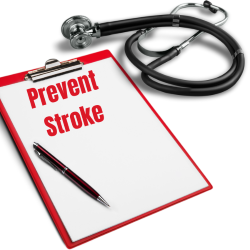
Strokes are caused by a multitude of factors that can be related to genetics, lifestyle choices, surgical procedures, an obscure defect, and other unknown factors. Consequently, there is no foolproof method to prevent strokes entirely. Nevertheless, you can be assured that by following the recommendations below, you can actively diminish your risk of suffering from a stroke. Conversely, neglecting these recommendations could substantially elevate your risk of stroke.
How to prevent stroke? Follow these steps:
1) Maintain your ideal weight
If you are overweight, you are more likely to have diabetes, high cholesterol, high blood pressure, heart disease, and experience a stroke. Excessive weight and elevated body mass index (BMI) have been identified as independent risk factors for stroke. Research has consistently shown an association between higher body weight and an increased likelihood of stroke. Moreover, BMI, a widely used tool for assessing body weight in relation to height, is a useful screening tool to assess overall body composition and determine potential health risks. There are many resources online to help you calculate your ideal body weight and body mass index (BMI).
According to the Centers for Disease Control and Prevention website , BMI provides a reliable indicator of body fat for most people and is used to screen for weight categories that may lead to health problems.
Update 7/9/23: The American Medical Association (AMA) updated their position and advised doctors to place less emphasis on BMI in determining healthy weight because it does not predict disease risk equally well across ethnic groups. Members adopted a new policy saying BMI should be just one factor in determining whether a patient is at a healthy weight and that other measures such as body composition, belly fat, waist circumference, and genetic factors are also important. This was due to the BMI scale being primarily based on data from caucasians, while body shape and composition varies among various ethnic and age groups.
BMI can still be used as one factor among many. The BMI Calculator below can help determine your body mass index (BMI):
|
It's important to remember that weight alone does not take in account your body composition. Fore example, someone who is a bodybuilder may have higher weight but lower body fat since muscle weighs more than fat. If you'd like a more precise measure of your bodyfat and BMI, there are BMI smart scales that can be purchased online. Even better, you can visit a nutrition professional that can help measure your bodyfat and provide education on a healthy diet. |
Wyze Smart Scale for BMI, Weight As an Amazon Associate I earn from qualifying purchases. |
Another helpful chart can be found at www.idealbodyweightchart.com . This chart provides information about the ideal weight for people ages 25 thru 59 with the lowest mortality rates.
2) Exercise Regularly
An easy guideline to remember for adults age 18 to 65 is to get 30 minutes of moderate aerobic exercise 5 times a week. You can divide your daily exercise into 2 increments of 15 minutes or 3 increments of 10 minutes per day if exercising 30 minutes at a time is not possible. Moderate aerobic exercise includes activities such as walking briskly, playing doubles tennis, water aerobics, and riding a bike to name a few. The Centers for Disease Control and Prevention has a webpage that explains how much physical activity one needs based on age including children and adults over 65.
3) Eat Heart Healthy FoodsA heart-healthy diet emphasizes whole, unprocessed foods that are low in saturated and trans fats, cholesterol, and sodium. It includes plenty of fruits, vegetables, whole grains, lean proteins (such as fish, poultry, and legumes), and healthy fats (such as nuts, seeds, and olive oil) |
Heart Healthy Cookbook for Beginners  As an Amazon Associate I earn from qualifying purchases. |
These foods are rich in essential nutrients, antioxidants, and fiber, which promote heart health by reducing inflammation, improving cholesterol levels, maintaining healthy blood pressure, and supporting overall cardiovascular function. See USDA dietary guidelines for 2020-2025.
4) Keep Blood Pressure Under Control
(normal = less than 120/80)
To monitor your blood pressure over time, keep a record of your readings in a journal or use a digital tracking app. Measure your blood pressure at consistent intervals, such as once a day or as advised by your healthcare professional, and note the date, time, and readings. By tracking these measurements, you can identify any patterns or changes in your blood pressure and provide valuable information to your healthcare provider for better management. There are several types of blood pressure cuffs available for individuals to monitor their blood pressure at home. The most common type is the upper arm cuff, which wraps around the upper arm. Another type is the wrist cuff, which is placed on the wrist and typically smaller and more portable.
As an Amazon Associate I earn from qualifying purchases.
5) Keep Cholesterol Under Control
Recommended cholesterol levels can vary based on age and risk factors for heart disease, so check with your MD to see if your levels are at an optimal level. Some general guidelines for cholesterol are as follows:
Total Cholesterol: (includes LDL+HDL) Below 200 mg/dL
LDL Cholesterol: Below 100 mg/dL (or below 70 mg/dL for individuals at high risk for heart disease)
HDL Cholesterol: 40mg/dL or higher (HDL "good" cholesterol helps remove LDL "bad" cholesterol from the arteries.)
Triglycerides: Below 150 mg/dL
6) Keep Blood Sugar Under ControlElevated blood sugar levels, particularly in individuals with diabetes, are associated with an increased risk of stroke. Persistently high blood sugar can damage blood vessels, promote inflammation, and contribute to the formation of blood clots, all of which can impair circulation, increase the likelihood of artery blockage, and heighten the risk of stroke occurrence. |
As an Amazon Associate I earn from qualifying purchases. |
Doctors commonly use the following tests to measure blood sugar levels:
Fasting Plasma Glucose (FPG) Test: This test measures blood sugar levels after fasting for at least 8 hours. Normal results for FPG are typically below 100 mg/dL (5.6 mmol/L).
Oral Glucose Tolerance Test (OGTT): This test involves fasting beforehand, followed by drinking a sugary solution. Blood sugar levels are then measured before and two hours after consuming the solution. Normal results for the two-hour OGTT are usually below 140 mg/dL (7.8 mmol/L).
Hemoglobin A1c (HbA1c) Test: This test provides an average blood sugar level over the past two to three months. Normal HbA1c results are usually below 5.7%.
7) Don't Smoke
Smoking is strongly linked to an increased risk of stroke. The harmful chemicals in tobacco smoke can damage blood vessels, promote the formation of blood clots, raise blood pressure, and accelerate the development of atherosclerosis, all of which contribute to an elevated risk of stroke. If you're a smoker and wonder how to prevent stroke, discontinuing smoking is the number one thing you can do to decrease your stroke risk.
Allen Carr's Easy Way to Stop Smoking Self Help Book
As an Amazon Associate I earn from qualifying purchases.
8) Take Medications as Directed
Make sure to know the side effects of medication and interactions with other medications - always inform your MD of any medications you are taking before starting a new one.
Remember, following these suggestions on how to prevent stroke will not guarantee that you will not have a stroke, but they will greatly reduce your risk of stroke.
9) Know Your Family Medical History
Certain genetic conditions can increase your risk of stroke. If you have close family members who have experienced stroke or who have genetic conditions which increase the risk of stroke, consult with your doctor for testing and risk management. To learn more about hereditary risk and how to prevent stroke, visit stroke-rehab.com/are-strokes-hereditary.
Get Our Stroke Rehab Guide
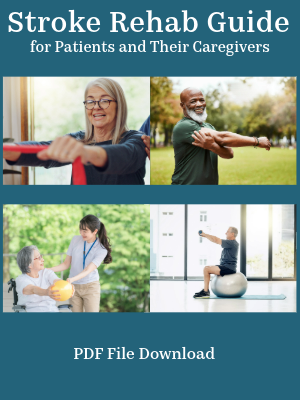
Our comprehensive stroke rehab guide in pdf format is designed for both patients and caregivers who want clear, practical ways to support recovery, improve daily function, and regain independence at home. It includes
- Rehab exercises with pictures for safe home practice
- Physical, occupational, and speech therapy guidance
- Tips for daily activities and adaptive equipment
- Answers to common questions from patient and caregivers
- Information on stroke causes, treatment, and prevention

About the Author
Karen Murray, MOT, CHT, CSRS, is a licensed occupational therapist, Certified Stroke Rehabilitation Specialist, Certified Hand Therapist, and Certified Personal Trainer with over 29 years of experience working with stroke survivors in hospital, outpatient, and home settings. She created Stroke-Rehab.com to help patients and caregivers better understand recovery and regain independence at home.
Medical Disclaimer: All information on this website is for informational purposes only. This website does not provide medical advice or treatment. Always seek the advice of your physician or other healthcare provider before undertaking a new healthcare or exercise regimen. Never disregard professional medical advice or delay seeking medical treatment because of something you have read on this website. See the disclaimer page for full information.
